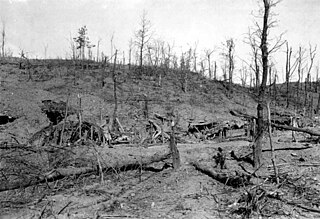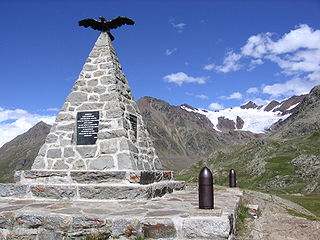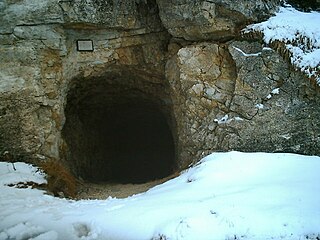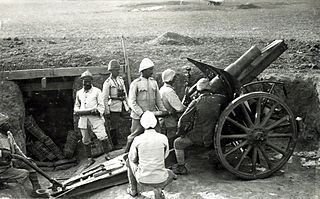 W
WThis article is about Italian military operations in World War I.
 W
WThe Alpini are a mountain infantry corps of the Italian Army, that distinguished itself in combat during World War I and World War II. In addition they are also famous in Italy for their songs and choirs.
 W
WThe Armistice of Villa Giusti or Padua ended warfare between Italy and Austria-Hungary on the Italian Front during World War I. The armistice was signed on 3 November 1918 in the Villa Giusti, outside Padua in the Veneto, Northern Italy, and took effect 24 hours later.
 W
WThe Battle of Asiago (Battle of the Plateaux) or the Trentino Offensive, nicknamed Strafexpedition by the Italians, was a major counteroffensive launched by the Austro-Hungarians on the Italian Front on 15 May 1916, during World War I. It was an unexpected attack that took place near Asiago in the province of Vicenza after the Fifth Battle of the Isonzo.
 W
WThe Battle of San Matteo took place in the late summer of 1918 on the Punta San Matteo during World War I. It was regarded as the highest battle in history until it was surpassed in 1999 by the Kargil Conflict at 5,600 m.
 W
WThe Battle of Caporetto was a battle on the Italian front of World War I.
 W
WCima Palon, also called Monte Pasubio, is the highest peak of the Pasubio group of Little Dolomites in Veneto, Italy. It has an elevation of 2,239 metres.
 W
WThe Fifth Battle of the Isonzo was fought from March 9–15, 1916 between the armies of the Kingdom of Italy and those of Austria-Hungary. The Italians had decided to launch another offensive on the Soča (Isonzo) River.
 W
WThe First Battle of Monte Grappa, also known as First Battle of the Piave in Italy, was a battle fought during World War I between the armies of the Austro-Hungarian Empire and the Kingdom of Italy for control of the Monte Grappa massif, which covered the left flank of the new Italian Piave front.
 W
WThe Battles of the Isonzo were a series of 12 battles between the Austro-Hungarian and Italian armies in World War I mostly on the territory of present-day Slovenia, and the remainder in Italy along the Isonzo River on the eastern sector of the Italian Front between June 1915 and November 1917.
 W
WThe Italian front or Alpine front involved a series of battles at the border between Austria-Hungary and Italy, fought between 1915 and 1918 in the course of World War I. Following secret promises made by the Allies in the 1915 Treaty of London, Italy entered the war aiming to annex the Austrian Littoral, northern Dalmatia, and the territories of present-day Trentino and South Tyrol. Although Italy had hoped to gain the territories with a surprise offensive, the front soon bogged down into trench warfare, similar to that on the Western Front in France, but at high altitudes and with very cold winters. Fighting along the front displaced much of the local population, and several thousand civilians died from malnutrition and illness in Italian and Austro-Hungarian refugee-camps. The Allied victory at Vittorio Veneto, the disintegration of the Habsburg empire, and the Italian capture of Trento and Trieste ended the military operations in November 1918. The armistice of Villa Giusti entered into force on 4 November 1918, while Austria-Hungary no longer existed as a unified entity. Italy also refers to the Great War as the Fourth Italian War of Independence, which completed the last stage of Italian unification.
 W
WThe mines on the Italian front during the First World War comprised a series of underground explosive charges of varying sizes, secretly planted between 1916 and 1918 by Austro-Hungarian and Italian tunneling units beneath their enemy's lines along the Italian front in the Dolomite section of the Alps.
 W
WThe Battle of Mount Ortigara was fought from 10 to 25 June 1917 between the Italian and Austro-Hungarian armies for possession of Mount Ortigara, in the Asiago Plateau.
 W
WConflicts took place in North Africa during World War I (1914–1918) between the Central Powers and the Entente and its allies. The Senussi of Libya sided with the Ottoman Empire and the German Empire against the British Empire and the Kingdom of Italy. On 14 November 1914, the Ottoman Sultan proclaimed a jihad and sought to create a diversion to draw British troops from the Sinai and Palestine Campaign. Italy wished to preserve its gains from the Italo-Turkish War. The Senussi Campaign took place in North Africa from 23 November 1915 to February 1917.
 W
WThe Second Battle of the Piave River, fought between 15 and 23 June 1918, was a decisive victory for the Italian Army against the Austro-Hungarian Empire during World War I. Though the battle proved to be a decisive blow to the Austro-Hungarian Empire and by extension the Central Powers, its full significance was not initially appreciated in Italy. Yet Erich Ludendorff, on hearing the news, is reported to have said he 'had the sensation of defeat for the first time'. It would later become clear that the battle was in fact the beginning of the end of the Austro-Hungarian Empire.
 W
WThe Sinai and Palestine campaign of the Middle Eastern theatre of World War I was fought by the Arab Revolt and the British Empire, against the Ottoman Empire and its Imperial German allies. It started with an Ottoman attempt at raiding the Suez Canal in 1915, and ended with the Armistice of Mudros in 1918, leading to the cession of Ottoman Syria.
 W
WThe Eighth Battle of the Isonzo was fought from October 10–12, 1916 between Italy and Austria-Hungary.
 W
WThe Eleventh Battle of the Isonzo was a World War I battle fought by the Italian and Austro-Hungarian Armies on the Italian Front between 18 August and 12 September 1917.
 W
WThe First Battle of the Isonzo was fought between the Armies of Italy and Austria-Hungary on the Italian Front in World War I, between 23 June and 7 July 1915.
 W
WThe Fourth Battle of the Isonzo was fought between the armies of Kingdom of Italy and those of Austria-Hungary on the Italian Front in World War I, between November 10 and December 2, 1915.
 W
WThe Ninth Battle of the Isonzo was an Italian offensive against Austria-Hungary in the course World War I. Including a triumvirate of battles launched after the Italians' successful seizure of Gorizia in August 1916 to extend their bridgehead to the left of the town, it ended in further failure for the Italian Chief of Staff Luigi Cadorna.
 W
WThe Second Battle of the Isonzo was fought between the armies of the Kingdom of Italy and of Austria-Hungary in the Italian Front in World War I, between 18 July and 3 August 1915.
 W
WThe Seventh Battle of the Isonzo was fought from September 14-17, 1916 between the armies of the Kingdom of Italy and those of Austria-Hungary. It followed the Italian successes during the Trentino Offensive and the Sixth Battle of the Isonzo in the spring of 1916.
 W
WThe Sixth Battle of the Isonzo also known as the Battle of Gorizia was the most successful Italian offensive along the Soča (Isonzo) River during World War I.
 W
WThe Tenth Battle of the Isonzo was an Italian offensive against Austria-Hungary during World War I.
 W
WThe Third Battle of the Isonzo was fought from 18 October through 4 November 1915 between the armies of Italy and Austria-Hungary.
 W
WThe Battle of Vittorio Veneto was fought from 24 October to 3 November 1918 near Vittorio Veneto on the Italian Front during World War I. The Italian victory marked the end of the war on the Italian Front, secured the dissolution of the Austro-Hungarian Empire and contributed to the end of the First World War just one week later. The battle led to the capture of over 5,000 artillery pieces and over 350,000 Austro-Hungarian troops, including 120,000 Germans, 83,000 Czechs and Slovaks, 60,000 South Slavs, 40,000 Poles, several tens of thousands of Romanians and Ukrainians, and 7,000 Italians and Friulians.
 W
WWhite Friday occurred during the Italian Front of World War I, when an avalanche struck Austro-Hungarian barracks on Mount Marmolada, killing 270 soldiers. Other avalanches the same day struck Italian and other Austro-Hungarian positions, killing hundreds. According to some reports both sides deliberately fired shells into the weakened snowpacks in an attempt to bury the other side.
 W
WThe White War is the name given to the fighting in the high-altitude Alpine sector of the Italian front during the First World War, principally in the Dolomites, the Ortles-Cevedale Alps and the Adamello-Presanella Alps. More than two-thirds of this conflict zone lies at an altitude above 2,000m, rising to 3905m at Mount Ortler. In 1917 New York World correspondent E. Alexander Powell wrote: “On no front, not on the sun-scorched plains of Mesopotamia, nor in the frozen Mazurian marshes, nor in the blood-soaked mud of Flanders, does the fighting man lead so arduous an existence as up here on the roof of the world.”